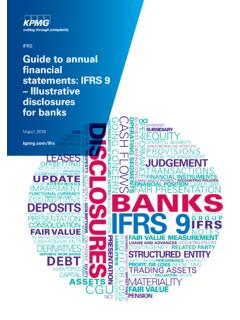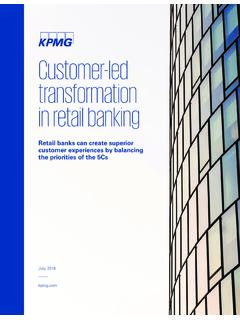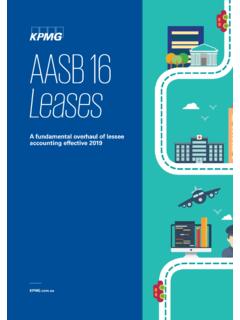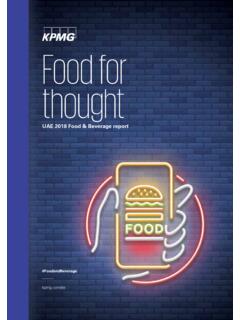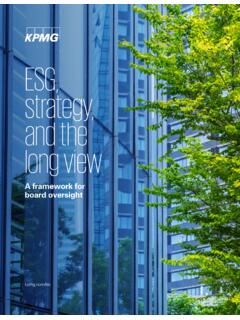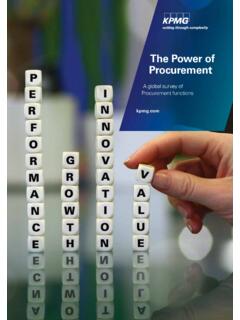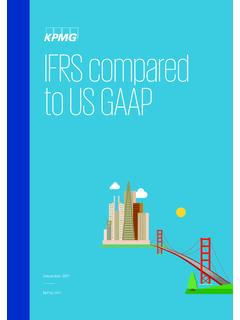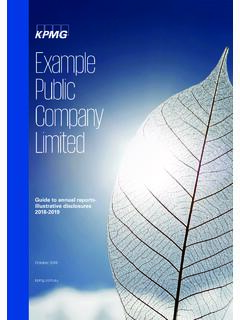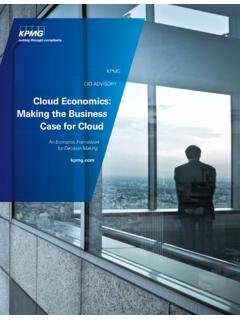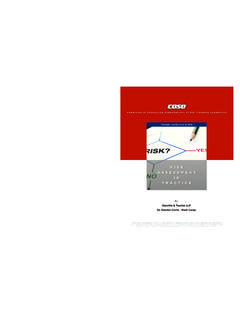Transcription of COSO Internal Control Integrated Framework (2013)
1 coso also issued these companion documents: Executive Summary; Internal Control Integrated Framework : Illustrative Tools for Assessing Effectiveness of a System of Internal Control (Illustrative Tools), which provides templates to assist users in documenting their assessment of principles, components, the overall system of Internal Control , and scenarios of how the templates could be used; and Internal Control Over External Financial Reporting: A Compendium of Approaches and Examples (the Compendium), which features examples of Internal Control over financial reporting and illustrates how users might apply the principles of the 2013 Framework to external financial reporting as with the 1992 Framework , the 2013 Framework may be used by issuers and non-issuers.
2 This article focuses on the impact to Canadian non-venture issuers and SEC registrants that are required to certify on the effectiveness of Internal Control over financial reporting but may be of interest to management of other entities that voluntarily utilized the 1992 Framework . The changes made to update the 1992 Framework are evolutionary, not revolutionary. The 2013 Framework takes into account changes in the business environment and operations over the last 20 years. The 2013 Framework retains the definition of Internal Control and the coso cube, including the five components of Internal Control : Control Environment, Risk Assessment, Control Activities, Information and Communication, and Monitoring most significant change made in the 2013 Framework is the codification of the 17 principles that support the five components.
3 The 17 principles were fundamental concepts implicit in the 1992 Framework . For effective Internal controls, the 2013 Framework requires that (1) each of the five components and the 17 relevant principles be present and functioning; and (2) the five components must operate together in an Integrated manner. Present means that the components and relevant principles exist in the design and implementation of the system of Internal Control , and functioning means that The Committee of Sponsoring Organizations of the Treadway Commission ( coso ) released its updated Internal Control Integrated Framework (2013 Framework )1 coso Internal Control Integrated Framework (2013)ContentsDefinition of Internal Control and of Internal Deficiency and Material Timeline and Effort.
4 7 2013 KPMG LLP, a Canadian limited liability partnership and a member firm of the KPMG network of independent member firms affiliated with KPMG International Cooperative ( KPMG International ), a Swiss entity. All rights Internal Control Integrated Framework (2013) was released by coso on May 14, 2013. The 140-page 2013 Framework includes these appendices: Glossary; Roles and Responsibilities; Considerations for Smaller Entities; Methodology for Revising the Framework ; Public Comment Letters; Summary of Changes to the coso Internal Control Integrated Framework (1992); and Comparison with coso Enterprise Risk Management Integrated Framework . For more information see the press release and executive summary at coso Internal Control Integrated Framework (2013)the components and relevant principles continue to exist in the system of Internal Control .
5 The 2013 Framework also provides example characteristics for each of the 17 principles, called Points of Focus, to assist management in determining whether a principle is present and functioning. The judgment required by management, the board of directors, and other organization personnel to design, implement, and conduct the Internal controls and assess their effectiveness has not changed. Users should reference Appendix F for a summary of significant changes and emphasis in the 2013 Framework from the 1992 of Canadian non-venture issuers and SEC registrants may use the 1992 Framework or the 2013 Framework to evaluate the effectiveness of their Internal Control over financial reporting during the transition period ending December 15, Thereafter, the 1992 Framework is considered superseded by the coso Board.
6 The coso Board recommends describing the applicable Framework used during the transition period by identifying the year of the Framework in the title. Since Canadian non-venture issuers state the Framework applied in their interim certificates on Internal Control we recommend identifying the year of the Framework in the next certificate adopting the 2013 Framework , coso followed due-process procedures during the five phases of the project described in Appendix D, including broad distribution of the Framework for public comment. The Framework was exposed for public comments twice, in September 2012 and December 2011. Definition of Internal Control and ObjectivesInternal Control is defined in the 2013 Framework as a process, effected by an entity s board of directors, management, and other personnel, designed to provide reasonable assurance regarding the achievement of objectives relating to operations, reporting, and compliance.
7 The coso Framework is designed to be used by organizations to assess the effectiveness of the system of Internal Control to achieve objectives as determined by management. The 2013 Framework lists three categories of objectives, similar to the 1992 Framework : Operations Objectives related to the effectiveness and efficiency of the entity s operations, including operational and financial performance goals, and safeguarding assets against loss. In the 1992 Framework , the operations objective was limited to effective and efficient use of the entity s resources. Reporting Objectives related to Internal and external financial and non-financial reporting to stakeholders, which would encompass reliability, timeliness, transparency, or other terms as established by regulators, standard setters, or the entity s policies.
8 In the 1992 Framework , the reporting objective was called the financial reporting objective and it was described as relating to the preparation of reliable financial statements. Compliance Objectives related to adhering to laws and regulations that the entity must follow. In the 1992 Framework , the compliance objective was described as relating to the entity s compliance with applicable laws and regulations. The 2013 Framework considers the increased demands and complexities in laws, regulations, and accounting standards that have occurred since 1992. The coso Framework is most commonly used by management of Canadian non-venture issuers and SEC registrants to assess the effectiveness of Internal controls over financial reporting on an annual basis as required by the CSA and SEC.
9 While the 2013 Framework expands the financial reporting objectives related to Internal financial and non-financial reporting, registrants using the either the 1992 or 2013 Frameworks to evaluate the effectiveness of Internal controls over external financial reporting based on the objectives of NI-52-109 or SEC Regulation 13a-15 still must meet the CSA s and SEC s objectives for effective Internal Control over financial reporting, which have not changed. Specifically, both the CSA and SEC define the term Internal Control over financial reporting as a process designed by, or under the supervision of, the issuer s principal executive and principal financial officers, or persons performing similar functions, and effected by the issuer s board of directors, management and other personnel, to provide reasonable assurance regarding the reliability of financial reporting and the preparation of financial statements for external purposes in accordance with generally accepted accounting principles (GAAP).
10 The definition also requires 2013 KPMG LLP, a Canadian limited liability partnership and a member firm of the KPMG network of independent member firms affiliated with KPMG International Cooperative ( KPMG International ), a Swiss entity. All rights This evaluation is required by NI 52-109, Certification of Disclosure in Issuers Annual and Interim Filings (NI 52-109) and SEC Regulations 13a-15 and coso Internal Control Integrated Framework (2013)that registrant s process would include policies and procedures that: 1. Provide for the maintenance of records that in reasonable detail accurately and fairly reflect transactions and dispositions of the assets of the issuer2. Provide reasonable assurance that transactions are recorded as necessary to permit preparation of financial statements in accordance with GAAP, and that receipts and expenditures of the issuer are being made only in accordance with authorizations of management and directors of the issuer3.
